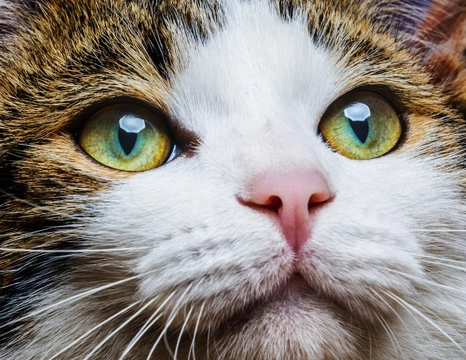
Can cats really see in the dark?
Two statements that are commonly made about cats are that they are nocturnal, and that they can see in the dark and these are in fact for many people, snippets of received wisdom that over time, have taken on the assumption of fact. However, while there is some truth in both of these statements, neither of them are completely accurate! Cats cannot “see in the dark” in the way that most of us assume the meaning to be-they do not have their own form of infra-red night vision goggles that allow them to see in total darkness, and nor are they actually nocturnal.
While it is true that cats are more active at night than they are during the day-and their eyesight has a part to play in this-they are actually crepuscular, which means that their activity peaks are in the liminal period between darkness and daytime-dawn and dusk. In terms of their eyesight and range of vision-and what they actually can see in the dark-the answer to this is rather more complex.
In this article, we will attempt to answer in detail the question of whether or not cats can really see in the dark-and how. Read on to learn more.
Cats, darkness and vision
The vision of every mammal is different-how we as humans see and perceive the world in terms of the colour spectrum, lighting, depth, movement and everything else is distinct from that of dogs, which is in turn distinct from that of cats, etc. This is because as different animals evolve differently in order to adapt, survive and thrive in their respective environments, the traits that weaken and strengthen over time vary from species to species-and even between the same species that originate from different areas.
Our domestic cats descend from small wild cats from arid desert regions, and this has have a large part to play in the way that our feline pets of today have evolved. You can see this in practice in your cat’s normal day-to-day behaviours. For instance, due to their heritage in hot, arid climates, cats do not need to drink as much water as most mammals in order to stay hydrated, and they are apt to sleep and chill out during the day when the sun is at its peak.
This is both in order to conserve energy when it is hot, and also because the types of prey that small wild cats pursue will be more active at night than in the day too, as they make use of the cooler night temperatures to go out in search of their own food.
Additionally, cats have very acute short-range vision-allowing them to pick up the minute movements of tiny rodents within a few feet of them, but not so good long-range vision.
This is why cats are apt to sit very still watching for movement that might indicate potential prey rather than ranging around and hoping to scare something out of hiding!
When it comes to seeing in daylight, people have clearer vision than cats, and we see best in full light, allowing colours, shapes and contrasts both up close and further away to really stand out. Your cat, however, sees much better in dim light and near darkness, and at this point, they will be picking up a lot more detail around them than we as humans ever will!
Can cats see in the dark? What do they see?
First of all, it is important to note that the only types of animals that can see in the dark-as in pitch darkness, without a hint of ambient light-are those that can create their own light! This is usually restricted to certain types of deep sea creatures that can generate and utilise bioluminescence to enable vision-something that cats are not able to do.
However, in what we generally think of as darkness-the middle of the night with just the stars out-cats really come into their own.
When you look at the conformation of your cat, you will observe that their eyes are comparatively large given their delicate heads, and this means larger irises-the black part in the middle of the eye that expands and contracts depending on light conditions.
In bright light, the irises shrink, while in dim light or near darkness, they expand in order to take in as much of the available ambient light as possible and so, improve their vision.
Light perception and use in vision is dictated by the rods and cones of the eyes-certain types of light-receptive cells. Cones help us to see in bright or full light, while rods come into their own in dim light or near darkness. Rods magnify the available light and so, make it easier to see in detail-and the more rods you have, the better your night vision will be!
In the human eye, 80% of the light cells are rods, while in cats, the figure approaches 98%, giving them a significant advantage when it comes to seeing in darkness and dim light. Cats also have a mirror-type layer at the rear of their eyes, which allows the eyes to absorb even more light than usual-something that we as humans are missing entirely.
Ultimately, no cat can see if there is literally no light-such as if your cat was in an enclosed room with no natural or artificial light filtering in. However, cats can make use of very small amounts of light and situations that we as people perceive as total darkness, and make good use of it to hunt and thrive!



